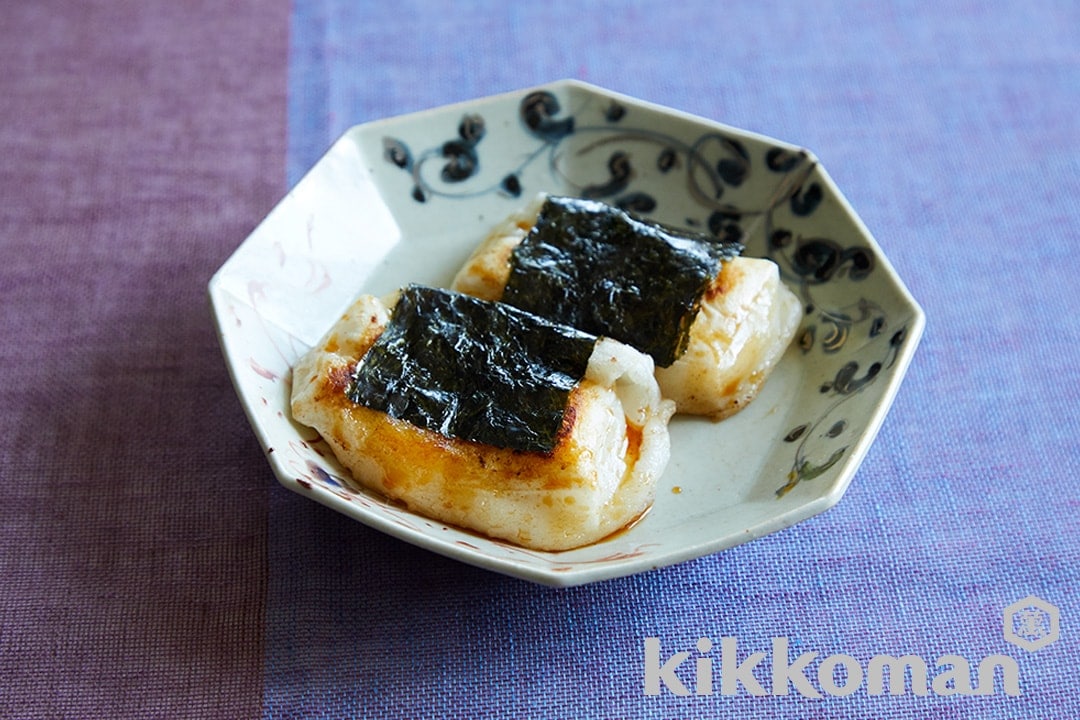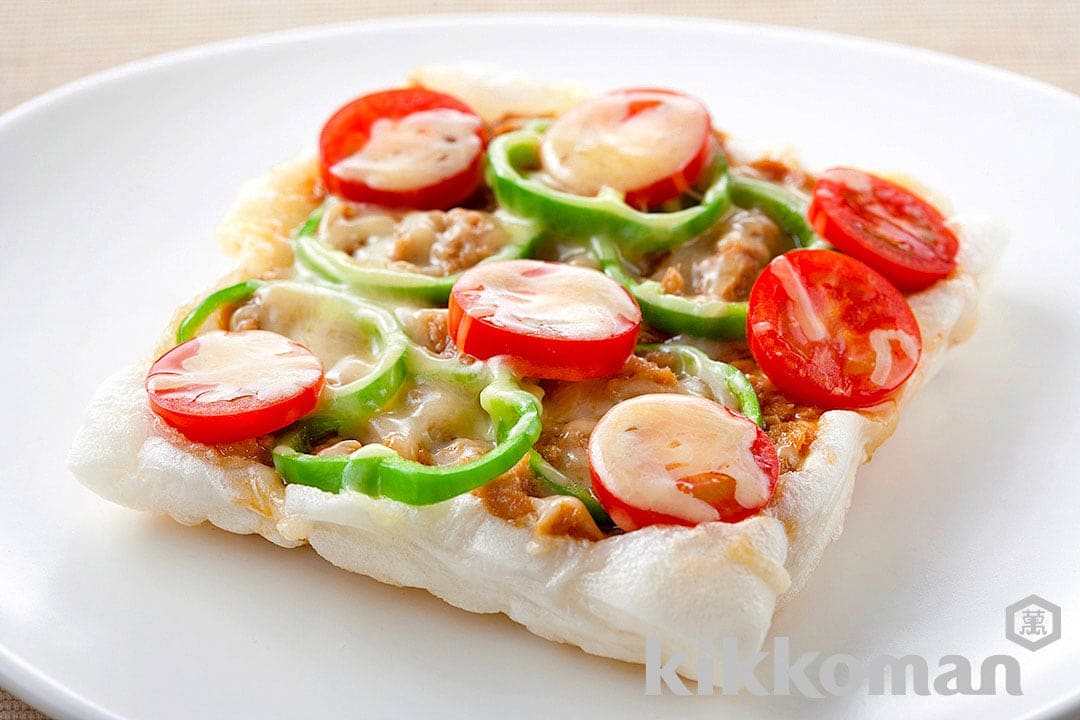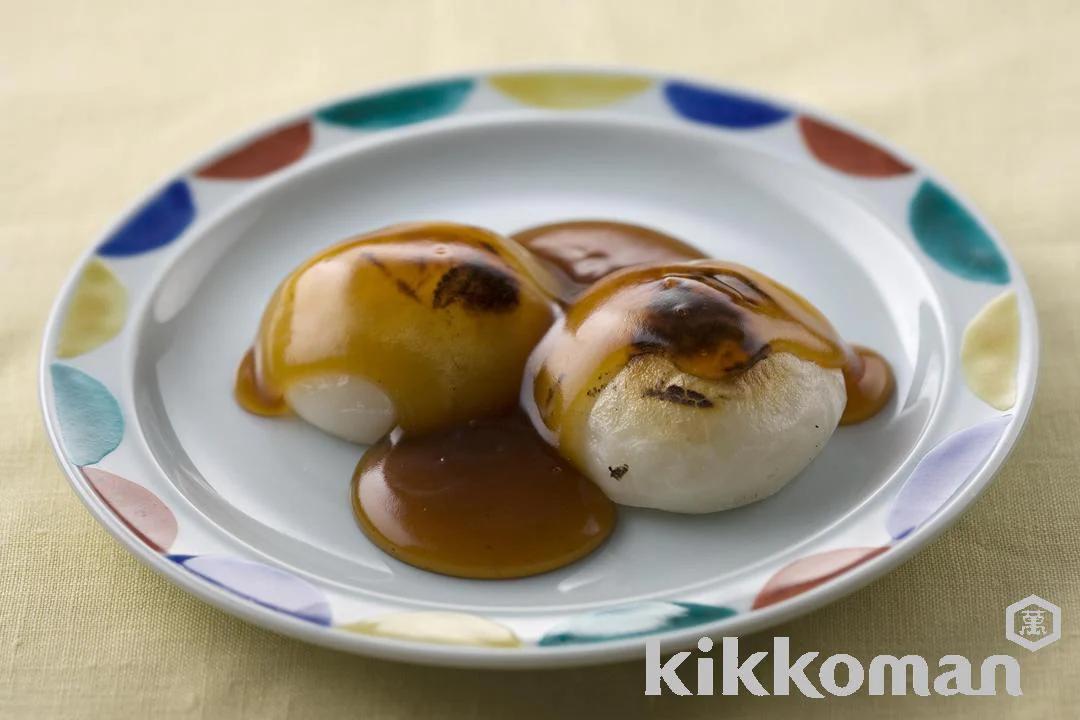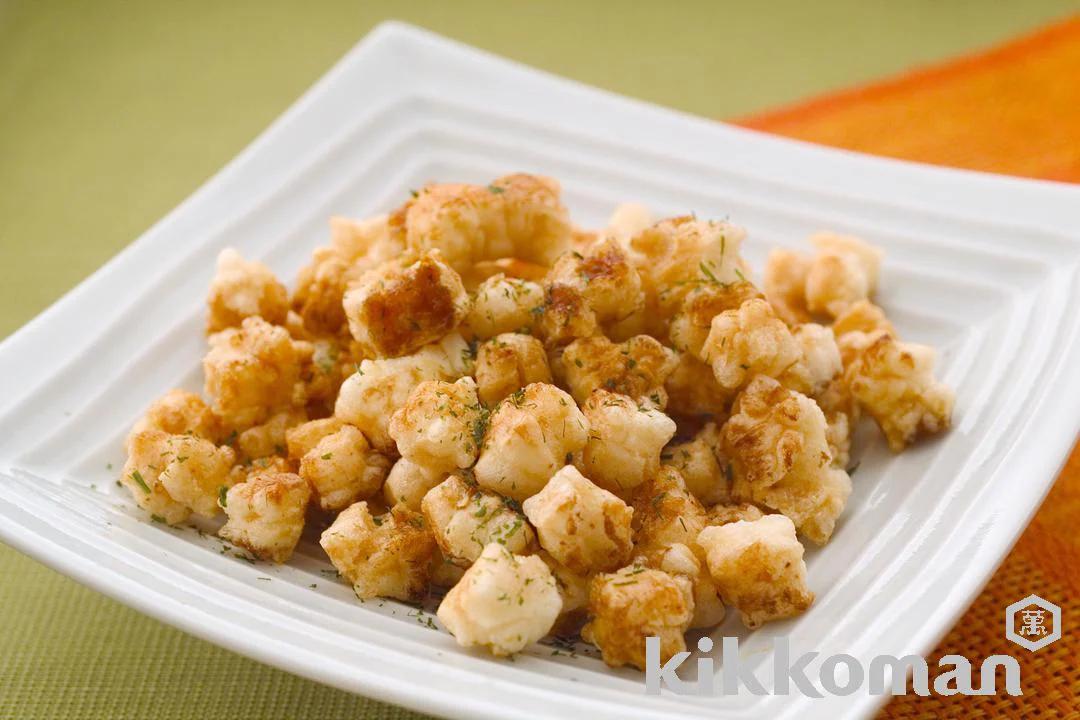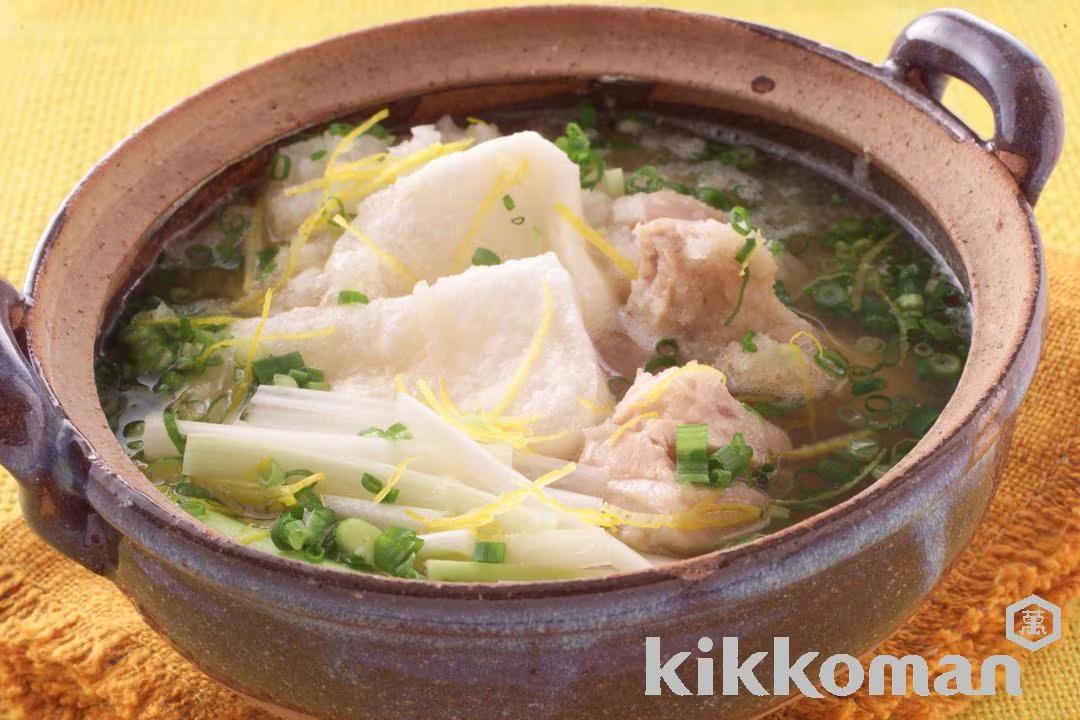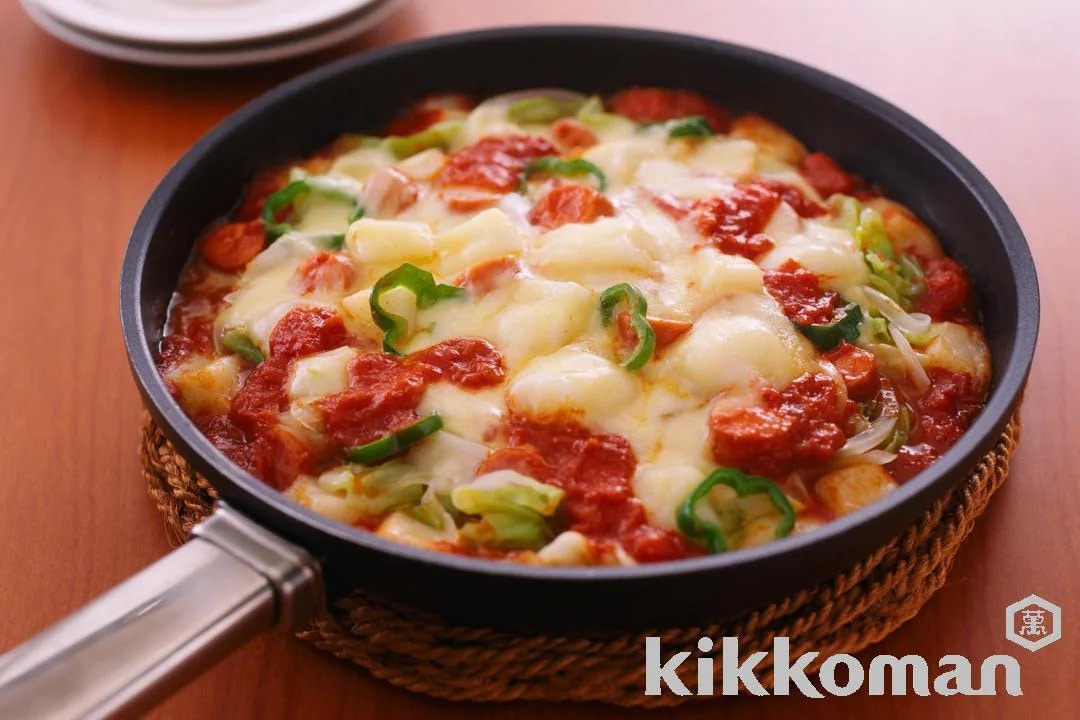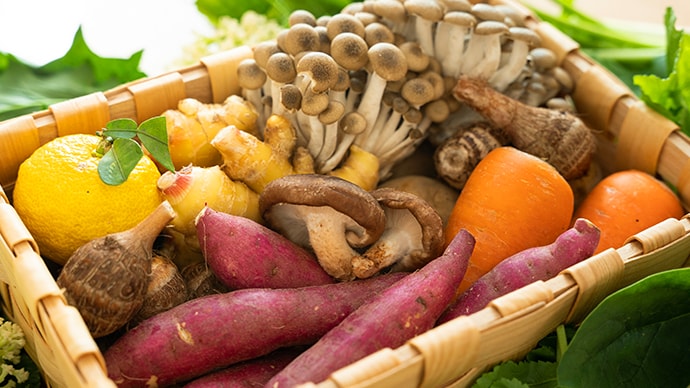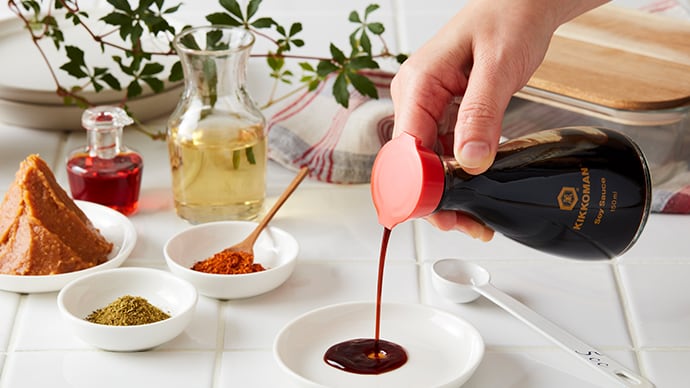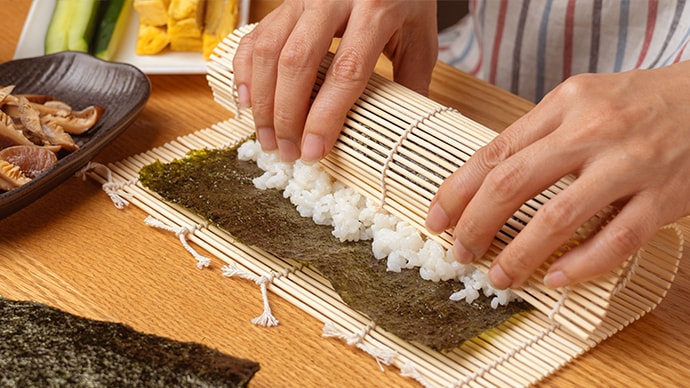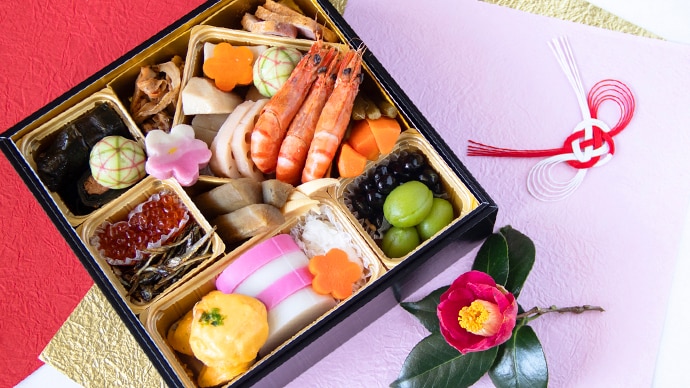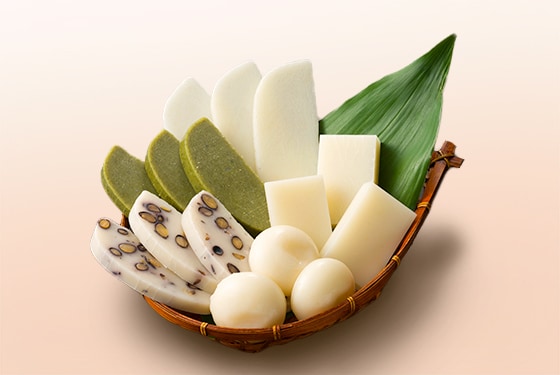
A processed food made from steamed glutinous rice that is pounded. A filling dish that can be enjoyed in a variety of ways.
What is mochi?
Since ancient times, mochi (餅 in Japanese) has been made in Japan. It is made by steaming rice and then pounding it in a large wooden mortar with a wooden mallet until it becomes a single sticky ball. The shape varies depending on the region, with round mochi in western Japan and square mochi in eastern Japan. It is popular to eat it baked and put it in zoni (a savory soup with mochi and vegetables) or hot pot. There are also various ways to eat it, such as "karami mochi" which is mochi mixed with grated daikon radish and soy sauce, "abekawa mochi" which is mochi sprinkled with soybean flour, "isobe mochi" which is baked mochi dipped in soy sauce and wrapped in seaweed, "anko mochi" which is mochi coated with red bean paste, and "zunda mochi" which is mochi sprinkled with crushed edamame. There are also "mame mochi" with beans inside and "kusa mochi" kneaded with mugwort.
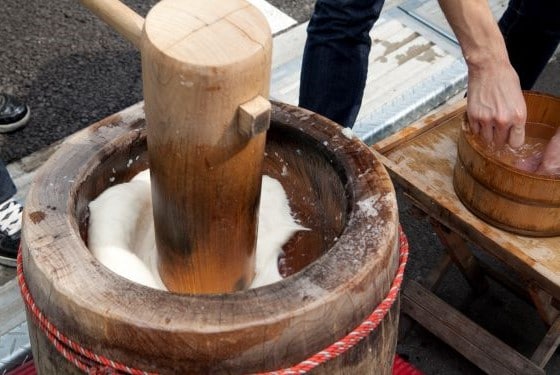
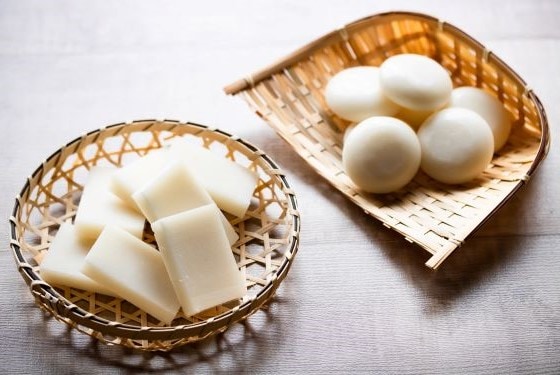
Nutrition facts
Approximately half of mochi's weight is comprised of carbohydrates, and contains little fat. Mochi contains small amounts of vitamins and minerals, but its main chemical component is carbohydrates. In Japan, it is sometimes used as a carb-loading ingredient as it is an efficient way to consume a high amount of carbohydrates in one sitting.
The starch contained in mochi is known as amylopectin, which is digested and absorbed more quickly than the amylose that is found in non-glutinous rice. To aid in the digestion of starch, it is effective to eat mochi with grated daikon radish, which contains starch digestive enzymes. Zoni, a dish in which mochi is eaten with plenty of vegetables, meat, and fish, is a nutritious meal that allows for the consumption of various nutrients at once.
Since mochi contains a lot of carbohydrates, it is good to eat it with pork and nuts, which are rich in vitamin B1 and support the metabolism of carbohydrates.
Storage to prevent food loss
Since mochi easily grows mold when exposed to air, if you are not going to consume right away, wrap each one in plastic wrap, place in a plastic bag and store in the refrigerator. It will keep for about one week. If frozen, it can be stored for about six months.
Trivia
In Japan, mochi has been revered as a special food in which gods reside. Kagami mochi, which is offered at New Year's, is one manifestation of this. The belief that worshiping the full moon will grant wishes also led to the custom of offering and eating round mochi on festivals and other celebrations.
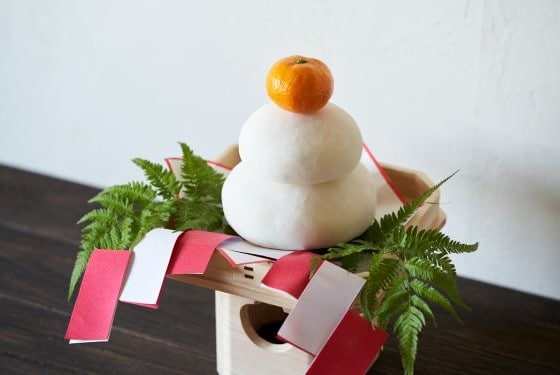
Related Recipes
10min
131kcal
500mg


